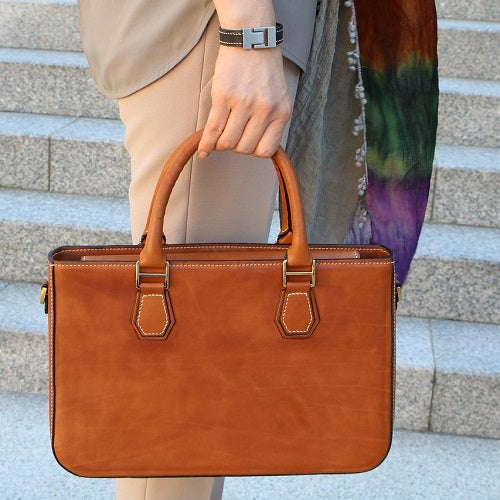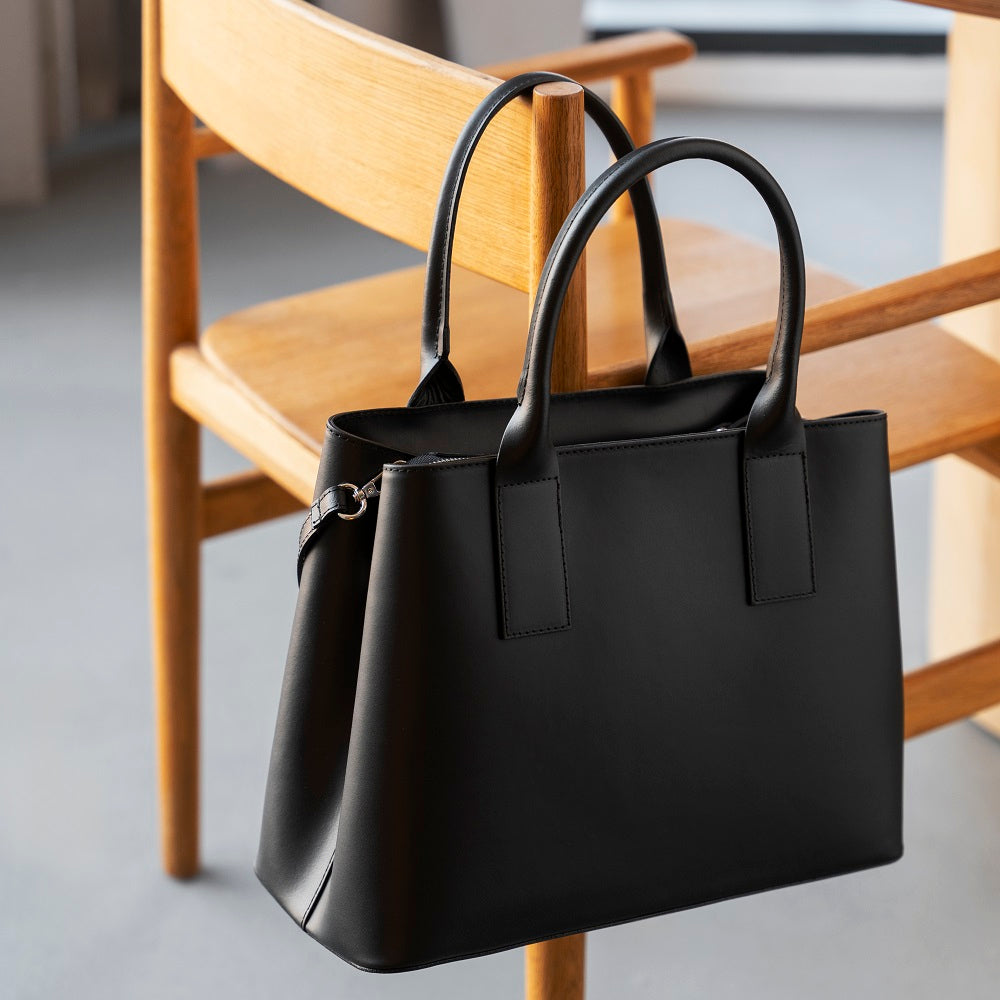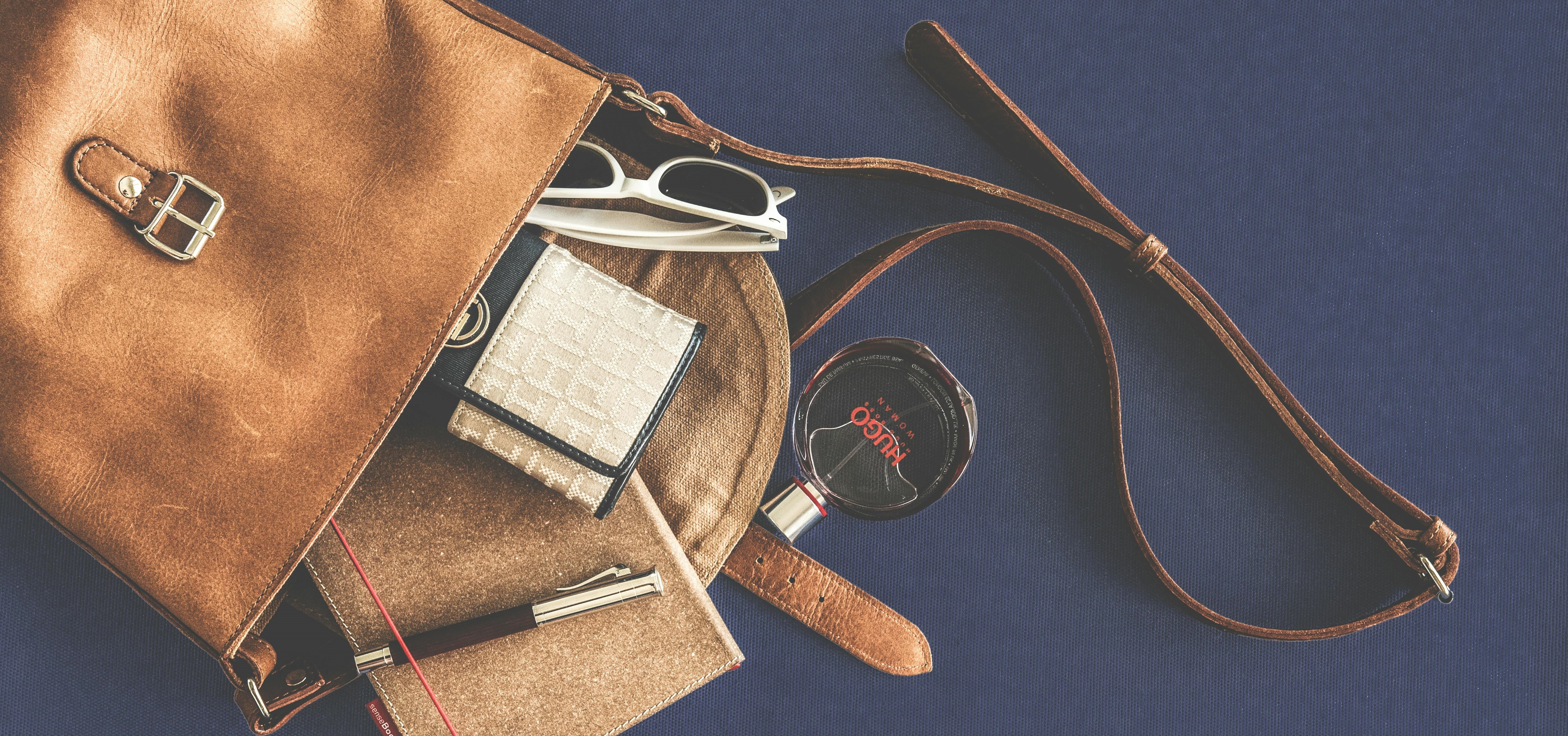Shopping for leather bags online can feel like wandering through a maze of terminology. Terms like "full grain," "top grain," and "genuine" are thrown around, but deciphering their meanings can be a challenge.
So, what exactly do these terms signify?
Enter our complete guide to full grain leather. Here, we offer in-depth definitions, weigh the pros and cons, provide a care guide, and draw comparisons to both top grain and genuine leather.
Are you prepared to delve into the intricate world of full grain leather?
Join us as we unravel its mysteries and explore why it reigns supreme in the crafting of luxurious leather bags.
What is Full Grain Leather?
Is full grain leather real leather? This is a question many online shoppers have when they encounter the term "full grain leather". Here's your answer:
Not only is it real leather, it's also the highest-quality leather you can find on the market. Full grain leather stands out as the toughest and most long-lasting type of leather you can find. It keeps its original thickness, soaks up oil well, and keeps the natural patterns of the animal hide intact. What sets it apart is that it doesn't undergo any sanding or chemical treatments before it's tanned, unlike other grades.

Is Full Grain Leather the Best Choice for Everything?
Full grain leather is super strong and appeals to lots of folks who love genuine leather items.But it might not suit everyone.Sometimes, we suggest going for top grain leather instead.
Let’s dive into full grain leather's features, its ups and downs, and how it stacks up against other types.

Pros of Full Grain Leather
1. Durability
The major plus of full grain leather? It's tough as nails.
Think about it: This leather comes straight from the animal, enduring all sorts of outdoor challenges like weather, bugs, and even scuffles with other animals.
Now, your leather goods might not face those exact challenges, but it's reassuring to know they could handle it.
With its full thickness and natural texture intact, full grain leather is ideal for heavy-duty stuff like bags and belts that need to withstand a beating.
2. It gets better as it ages
Full grain leather's natural beauty only gets better with age, attracting those who appreciate timeless, top-notch items. Recognizing full grain leather is a breeze for those in the know—it has a distinct look.
One of the things we adore about it? As time goes by, your full grain leather develops something called a patina.
This patina is like a soft glow that comes from regular use. As it forms, the leather starts looking richer, fuller, and its grain becomes more pronounced.
We see a patina as adding character and giving your leather item a one-of-a-kind vibe.
3. Made to Last
Full grain leather is crafted to withstand the test of time.
Being the toughest and most natural type of leather available, it often outlasts other kinds by years.
A well-kept full grain leather bag can easily stick around for decades (more on upkeep later).
4. Resists Water
Is full grain leather waterproof?
Well, full grain leather boasts better water resistance compared to other leathers. This is because it retains the original oil absorption properties of the hide, unlike top grain or genuine leather.
In nature, the animal hide had to fend off water to survive harsh weather conditions. So, full grain, being closest to the original hide, inherits this water resistance.
Its natural texture allows it to soak in moisture from conditioners (or even just rain) without taking major damage or losing shape.
But remember, no leather is completely waterproof. Leather is porous, so excessive liquid can harm it. Check out our care section for tips on handling excessive water damage to your leather goods.
Downsides of Full Grain Leather
Natural Flaws
While many view this as a positive trait, full grain leather often bears marks and imperfections.
These arise from its natural state and the animal's exposure to its surroundings.
Animals naturally develop scars from fights and rubbing against objects, which carry over to full grain leather since it's left untreated—unlike top grain leather, which undergoes sanding to remove such marks.
Consequently, blemishes and imperfections are part and parcel of full grain leather goods.
For most, these flaws add to the charm, making each item entirely unique.
However, for those seeking a more uniform appearance in their leather, the presence of imperfections may render full grain leather less appealing compared to top grain leather.
Weight
As we've noted, full grain leather uses the entire thickness of the animal hide, which boosts its durability but also adds to its weight compared to other options. If you're new to full grain leather goods, you might find them a bit heavier than expected.
Before making a purchase, it's wise to carefully consider the weight of the full grain leather item and compare it to what you're currently using. If it's noticeably heavier, pay close attention to the quality of the carrying straps provided.
Also, think about how much you plan to carry it. For short commutes, it's no big deal. But for longer walks to work, you might find a more comfortable backpack to be a better choice.
Cost
Full grain leather typically comes with a higher price tag compared to other leather types.
Manufacturers shell out more to acquire it because finding hides without visible damage, suitable for working with, can be tough due to no sanding allowed.
Plus, working with full grain is trickier since no chemical processes are allowed—it's tougher to manipulate than other leathers, which hikes up labor costs.
These expenses get passed down to you, the consumer, in the final price.
Many folks view quality leather goods as investments, so the price might not be a big worry when you know your full grain leather product can last for decades.
Full Grain Leather VS Top Grain Leather
Top grain leather, also known as corrected grain leather, has its top layer sanded or shaved off to get rid of any marks or imperfections. This makes it perfect for folks who prefer a smooth and consistent surface on their leather items.
Sometimes, fake grains are added to top grain leather to give it a natural yet uniform appearance that customers love.
We've noticed that these leather bags are often popular among doctors and attorneys who need sleek-looking leather briefcases for work.
A protective finishing coat is applied to top grain leather to prevent marks that might show up on full grain leather. While this appeals to many, it's important to know that this coating stops a patina from forming. Unlike full grain leather, top grain leather goods don't develop with age.
Top grain leather is usually not as strong as full grain leather because it doesn't use the entire thickness of the leather. Some natural grains are removed, which reduces water resistance and strength.
However, top grain leather is still tougher than genuine leather or fake leather options like PU leather. Plus, its uniform appearance makes it great for embossing.
Despite these differences, most of the qualities of natural leather are still there.
You can expect top grain leather bags to last for decades.
Additionally, top grain leather is generally less pricey than full grain alternatives because it's easier to work with and find for manufacturers, which affects the price for customers.
Full Grain Leather VS Genuine Leather
Compared to full grain leather, genuine leather isn't as tough or sturdy.
The term "genuine leather" can be a bit misleading—it's real leather, but it's the lowest quality you can find.
It's tricky to pin down exactly what genuine leather is because it's become a broad term for any product containing even a small bit of real leather.
Genuine leather might include bonded leather, which is made by combining lots of small scraps of leather together.
Often, bonding agents and chemicals are used in the process. To make it look natural, fake grains are sometimes added to genuine leather.
For most people, telling genuine leather apart from top grain leather isn't easy. And it seems a little bit unnecessary to actually learn how to identify full grain leather just to buy a high-quality leather bag. That's why we suggest just asking the seller about the leather grade before you buy anything labeled as leather.
If something is labeled as genuine leather, it's a good idea to ask for more details before considering it.
We personally steer clear of goods labeled as genuine leather because you can't be completely sure what you're getting. Full grain and top grain leather are the only sure signs of quality. With genuine leather, it could be anything.
But from what we've seen, it's often the cheapest option for manufacturers and isn't made to last.
When something is labeled as genuine leather, you can't be sure about its quality. Genuine leather items are cheaper than full grain leather, but they won't hold up as well over time. That might be fine for things that don't get a lot of wear and tear, but for items like bags and totes, it's better to invest in higher-quality leather for the long haul.
How is Full Grain Leather Made?
Since full grain leather is the most natural type of leather, its production is quite straightforward.
The process involves just two stages:
Preparation:a) The entire buffalo or cowhide is treated, soaked, and cleaned.
b) All the hair, fat, and other materials under the skin are removed.
c) If the hide is too thick, it's split into two layers: the top, high-quality grain layer with all the natural properties, and a thin, lower-quality under layer.
The under layer is not recommended for long-lasting leather goods because it's the lowest quality part of the hide. The grain layer, on the other hand, is much more durable as it's the outer part that originally protected the animal.
i) In the production of full grain leather, either the original hide or the thick grain layer is immediately put into the tanning process without any additional treatment.
ii) For top grain leather, the original hide or the grain layer is first sanded to remove imperfections, which reduces durability but gives the leather a smooth appearance, and then it's put into the tanning process.
iii) Genuine leather or split leather uses the thin under layer, often combined with other leather scraps and artificial bonding agents. An imitation grain is printed on it to make it look like full grain or top grain leather, and then it's entered into the tanning process.
Tanning
After preparation, the hide goes through tanning.
This changes the hide from its raw state into a strong material, good for clothes and leather goods.
During tanning, the hide is put into a big rotating drum with a tanning substance like chromium or vegetable dye until its pH levels become stable. Chrome tanning and vegetable tanning are the most common methods.
Then the leather is taken out and ready to be used to make full grain leather items.
It's important to note that while these steps are easy to grasp, the process itself is quite tough.
Firstly, finding suitable hides is hard. Most people are okay with some imperfections on the hide, but too many flaws usually mean it's rejected. That means only a few hides are good enough for full grain leather.
Secondly, full grain leather is thick and heavy. It's really tough to shape it, and you need heavy-duty tools to do it.
How to Care for Full Grain Leather?
Full grain leather is special because it's really strong, but it can still get damaged because it's untreated. Even though full grain leather is top-notch, taking care of it is super important to keep it in good shape.

Here are some easy tips to clean your full-grain leather stuff without ruining how they look:
For small marks on the surface, just wipe them off with a soft, damp cloth. If stains are stubborn or dried, warm water should do the trick to get rid of dirt.
Your full grain leather items are more resistant to water damage than some other leathers, but still, don't go overboard with water. Remember, full grain leather naturally has imperfections, which is part of why it's so cool.
Avoid using rough brushes or rough cloths because they might end up doing more harm than good to your full grain leather. And be careful with scratching—it can happen if you're not gentle with your upkeep.
Also, avoid using strong chemicals on genuine leather. Instead, think about using a leather conditioner.
Once you've cleaned the surface of your full grain leather and it looks clean, you can use a leather conditioner if your bag or leather item seems dry.
Just put a little bit of leather cream or conditioner on a cloth that doesn't leave lint. Rub the conditioner into your full grain leather gently, using a circular motion.
Your real leather will start soaking up the conditioner at this point, which helps moisturize and refresh the material.
If you're not sure about the conditioner you're using, you can test it on a small, hidden spot on your real leather bag and leave it for 24 hours to see how the leather reacts.



